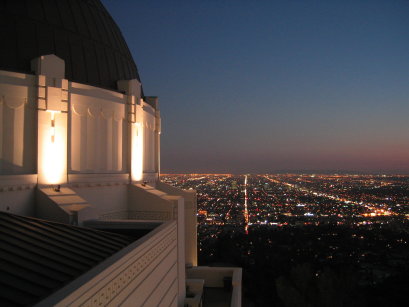So I must apologize. I went to the preview of the Griffith Observatory so long ago now and did promise to blog about it with more than just one nice picture, but it did not happen. Partly because I had to go back across the Atlantic to do some work, and then got ill over the weekend I was planning to do it, and then…

Anyway, here are some of my thoughts. First note that my two week delay means that this is no longer a scoop, since even the LA Times had a spread on the whole thing on Thursday. A rather nice one as well. I urge you to consult it for a lovely pull-out graphic of the whole site. There is also a special website with picture tours, nifty 360 degree interactive shots of the spaces, and other information. The Griffith opened yesterday.
What they’ve done over the last four or five years is simply shut down the entire building and rethink and redo a great deal of it. How to preserve the lovely 70 year old landmark, while making it even better? Simple question – simple answer: Get $93 million for your project (I find this number, the earth-sun distance in miles, suspicious), and then go underneath the existing building and hollow out about the same amount of space that is has, but underground. Fill it with lots of goodies. And I mean lots and lots. What goodies? We’ll see. […] Click to continue reading this post →



